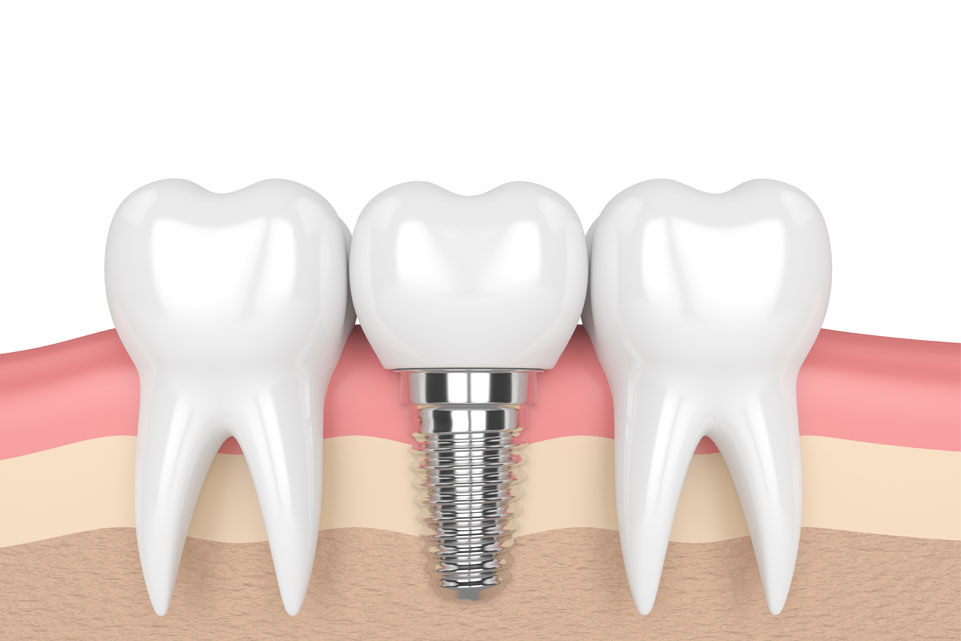Overview
For over 40 years Dental Professionals from around the world have placed Dental Implants in patients to restore their oral function. Dental Implants are made from surgical grade Titanium, and in most cases offer a permanent solution for one or more missing teeth. Titanium is not only used for Dental Implants, it is the material used for many other types of medical devices, such as Knee and Hip replacements. The properties of Titanium allow the human bodies bone to actually integrate into the metals surface. This process is known as “Osseointergration.” This amazing discovery was made by Dr. PI Branemark in the mid to late 1960’s and was funded by the Nobel Research Institute in Stockholm Sweden. Since then Millions of people have enjoyed an improved quality of life.
Like many modern medical and dental technologies, Dental Implants have been dramatically improved over the last few decades. From the actual physical design, to the surface, these devices are more predictable then ever. This has allowed Dentists to offer their patients *“Immediate Function” in many cases. Immediate Function enables the patient to leave the office the day of surgery with a Temporary Tooth in place. In as little as eight weeks from that date, the patient can receive their final crown.
Real Smiles utilizes these advancements along with “State of the Art” CAT scan technology, and sophisticated surgical planning software to create an optimal patient experience.
Why choose an implant over a supported bridge?
While a tooth supported bridge is a reasonable choice, it does have some significant disadvantages over a Dental Implant. For example with a three unit bridge the Dentist must grind off the enamel of the two adjacent teeth in order to cement the bridge in place. This process can lead to decay of those teeth. In addition, human bone needs force applied against it in order to stay healthy and in place. With a three unit bridge the missing tooth is replaced with a “floating” tooth suspended between two crowns. This is called a Pontic. Because the Pontic does not apply force on the bone, the bone melts away over time. This can lead to destabilization of the adjacent teeth, hygiene issues, and cosmetic challenges.
In contrast, an implant recreates the natural anatomy and applies force to the bone. This keeps the bone healthy and in place. It also allows the Dentist the ability to leave the adjacent teeth alone.
Lastly, research indicates that most tooth supported bridges fail with in fifteen years, often even sooner then that. While most implants, when integrated, last a lifetime. When you consider the “Lifetime Value”, lack of bone loss, cosmetic look, and not having to grind down healthy adjacent teeth, the choice most people make is to have the Dental Implant.
There are two other choices a patient can make. One is a removable bridge this is not a very attractive choice. Most Dentists only use it for temporary reasons. The only advantage it has is price. Two is a Maryland Bridge or Resin Bonded. This solution does leave the adjacent teeth alone, but these often fail and have to be re-bonded over and over again. They also do not address the bone loss problem.

